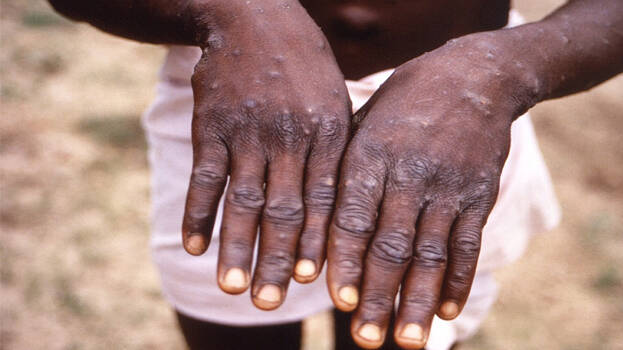25 important facts about HIV and your health

Prevention
1 The most common way that HIV is transmitted is through sex, but sharing needles is also very high-risk.
2 Having only one sex partner reduces your risk of contracting HIV, but monogamy won’t protect you completely unless you know for sure that both you and your partner are not infected with HIV.
3 Knowing your own status is important for both your health and the health of your partner. Talking about your HIV status can be difficult or uncomfortable, but is an important topic to bring up before you have sex.
4 To reduce your risk of getting HIV or other STIs, you must use one, new condom with every act of anal, oral or vaginal sex. Check the condom’s expiration date and follow the instructions on the packet, use latex condoms – not lambskin – and use a water or silicone-based lubricant (do not use lotion, baby oil or any oil-based lubricant) during anal or vaginal sex to keep condoms from slipping or breaking.
5 Get routine HIV tests to make sure you are healthy. If you share needles, syringes or other equipment for injecting drugs, have a history of sexually transmitted diseases, or have had unprotected sex with multiple or anonymous partners, the U.S. Center for Disease Control recommends getting tested at least once a year.
Exposure
6 HIV can be transmitted through blood, semen (cum), pre-seminal fluid (pre-cum), breast milk, vaginal fluids and rectal (anal) mucous. Saliva, tears and urine do not carry HIV unless they contain traces of blood or other infectious fluids.
7 HIV can be transmitted through sexual contact, pregnancy, childbirth and breastfeeding, injection drug use, occupational exposure or a blood transfusion/organ transplant. HIV does not spread through casual contact and does not penetrate unbroken skin.
8 If you believe you have been exposed to HIV, there are still emergency measures that can increase your chances of staying HIV-negative. Anyone who has been exposed to HIV can take anti-HIV drugs called post-exposure prophylaxis (PEP) to reduce the chance of becoming HIV positive.
9 To be effective, PEP must begin within 72 hours of exposure, before the virus has time to rapidly replicate in your body, and the sooner the better.
10 There are two types of PEP: 1) occupational PEP (sometimes called “oPEP”), and 2) non-occupational PEP (sometimes called “nPEP”).
Infection
11 It is never good to guess whether you have HIV based on symptoms alone – HIV infection has the same symptoms as many other infections and illnesses that are more common than HIV, and there may be no noticeable symptoms of an HIV infection at all. If you suspect you’ve been infected because of a risky experience or symptoms, the only way to be sure is to get tested for HIV.
12 Often people who have been infected with HIV only begin to feel sick when they progress towards AIDS, which could take 10 or more years.
13 As early as 2-4 weeks after exposure to HIV, some newly-infected individuals experience short-term AIDS-related symptoms (ARS), often described as “the worst flu ever,” which later subsides. However, not everyone infected with HIV gets ARS.
14 An HIV-positive person is the most infectious a few weeks to a few months after being infected – often before the person knows she or he carries HIV. It is important to practice safe sex with every new partner, even those who think they are HIV-negative.
15 After the initial infection the virus becomes less active in the body and the infected person can appear and feel well, but is still capable of transmitting the virus.
16 HIV symptoms can include fever, chills, night sweats, rash, muscle aches, sore throat, fatigue, swollen lymph nodes and ulcers in the mouth. However, many other illnesses can produce the same symptoms.
17 Dental visits are extremely important because many signs of HIV infections can begin in the mouth and throat.
18 Even while there are no symptoms of an HIV infection, getting tested and into treatment sooner can delay or decrease the likelihood of developing AIDS and reduce the chance of infecting others.
Living with HIV
19 You may feel overwhelmed when you begin treatment for HIV. This is a good time to ask your doctors and medical providers questions about treatment options. Don’t forget to bring materials you might need, write down questions and answers, and ask about future appointments.
20 HIV-positive people can still have sex and relationships, and HIV does NOT prevent anyone from dating and marrying, but it requires more trust and responsibility from both people involved. Healthcare providers can be key partners in helping you maintain a healthy and safe sex life while keeping partners safe.
21 Case managers and nurses can answer questions about medications and side effects, lab reports, mental health needs, insurance questions, medical history and your overall treatment plan.
22 People living with HIV/AIDS can face serious health threats from what are known as “opportunistic” infections. They take advantage of your weakened immune system and can cause devastating illnesses.
23 Most life-threatening Opportunistic infections occur when your CD4 count (the number of a certain type of white blood cell in one milliliter of blood) falls below 200 cells/mm3, which is the threshold when an HIV-positive person is diagnosed with AIDS. These infections are the most common cause of death for people with HIV/AIDS.
24 The Americans with Disabilities Act of 1990 prohibits employment discrimination on the basis of disability. Court decisions have found that an individual with even asymptomatic HIV is protected under this law.
25 HIV medications and treatments have significantly changed with the course of HIV infection since the early days of the epidemic. With daily medication, regular laboratory monitoring, and lifestyle changes, HIV can be manageable as a chronic disease. People living with HIV can enjoy healthy lives.
What's Your Reaction?
Founded in 1976, Out Front is the largest LGBTQ news organization in the Rocky Mountains. "Like" Out Front on Facebook: facebook.com/outfrontcolorado, and follow us on Twitter: @outfrontco.










